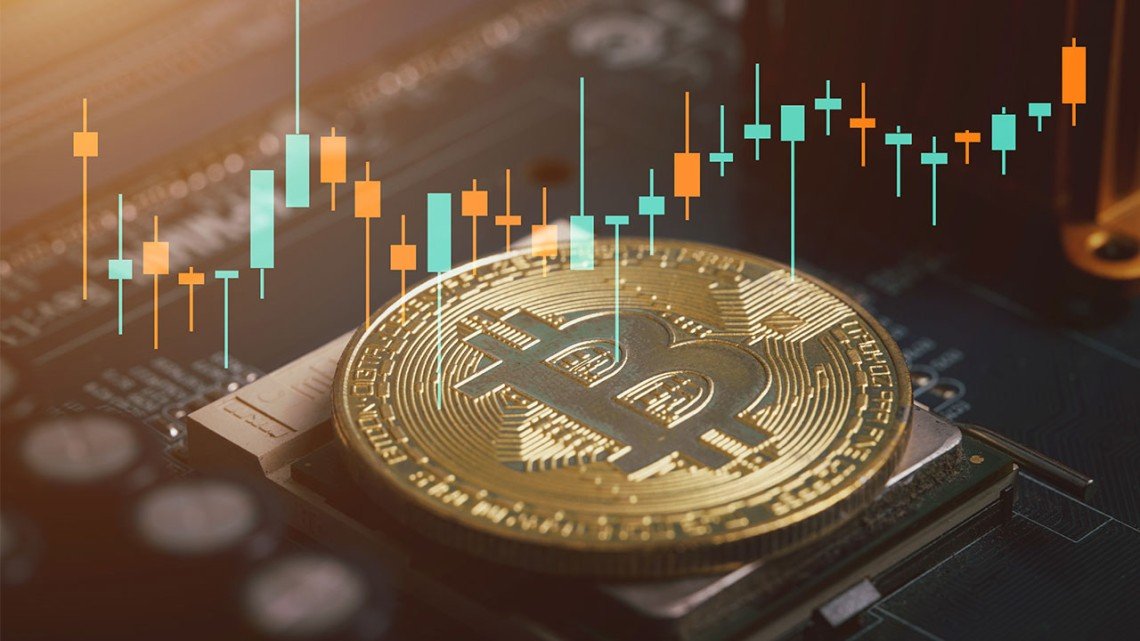The bitcoin halving event news 2025 continues to dominate cryptocurrency discussions as investors and analysts examine the lasting effects of April 2024’s fourth halving. While the next Bitcoin halving won’t occur until 2028, the current post-halving period in 2025 presents unique market dynamics that every crypto investor should understand. This comprehensive analysis explores how the recent halving event influences Bitcoin’s trajectory throughout 2025, examining price predictions, market sentiment, and investment strategies in the post-halving landscape.
The cryptocurrency community closely monitors bitcoin halving event news 2025 because historical patterns suggest significant price movements typically occur 12-18 months after each halving event. With Bitcoin’s mining reward reduced from 6.25 to 3.125 BTC per block in April 2024, the supply shock continues to ripple through the market, creating compelling investment opportunities and challenges that define the current market cycle.
What is Bitcoin Halving and Why Does It Matter in 2025
Understanding the Bitcoin Halving Mechanism
Bitcoin halving represents a fundamental aspect of Bitcoin’s monetary policy, occurring approximately every four years or every 210,000 blocks. The block reward decreased to 3.125 BTC during the last halving, which took place in April 2024, marking the fourth such event in Bitcoin’s history.
The halving mechanism serves multiple crucial purposes within Bitcoin’s ecosystem. First, it controls inflation by systematically reducing the rate at which new bitcoins enter circulation. Second, it creates artificial scarcity that often drives long-term price appreciation. Third, it ensures Bitcoin’s maximum supply cap of 21 million coins remains inviolable.
Historical Context of Bitcoin Halving Events
Previous halving events provide valuable insights for understanding current market dynamics. In 2016, it dropped from 25 BTC to 12.5 BTC. In May 11, 2020 halving, the reward dropped from 12.5 to 6.25 BTC per block. Each halving has historically been followed by significant bull markets, though the timing and magnitude vary considerably.
The 2012 halving saw Bitcoin rise from approximately $12 to over $1,100 within 18 months. The 2016 halving preceded a rally from around $650 to nearly $20,000 by late 2017. The 2020 halving contributed to Bitcoin’s historic rise to approximately $69,000 in November 2021.
Bitcoin Halving Event News 2025 Current Market Analysis

Post-Halving Market Performance
The bitcoin halving event news 2025 reflects a market still adjusting to reduced supply dynamics. Market analysts expect Bitcoin to rally again in 2025, building on the foundation established by the April 2024 halving event. Current market conditions suggest we’re in the early stages of a post-halving bull cycle.
Market data indicates increasing institutional adoption, improved regulatory clarity, and growing mainstream acceptance continue to support Bitcoin’s fundamental value proposition. The combination of reduced new supply from halving and increasing demand creates a potentially explosive setup for significant price movements throughout 2025.
Supply and Demand Dynamics in 2025
Bitcoin halving reduces the block reward given to miners, effectively lowering the rate at which new bitcoins are created. This mechanism is intended to mimic the scarcity of resources like gold. The current post-halving environment in 2025 showcases these dynamics in real-time.
With daily Bitcoin production now at approximately 450 BTC (down from 900 BTC pre-halving), the supply shock continues to impact market equilibrium. Institutional investors, individual retail investors, and corporate treasuries compete for increasingly scarce Bitcoin supply, potentially driving significant price appreciation.
Mining Industry Adaptation
The halving event significantly impacts Bitcoin miners, who must adapt to reduced block rewards while maintaining network security. Mining operations with higher efficiency and lower energy costs gain competitive advantages in the post-halving environment.
Many mining companies have consolidated, upgraded equipment, and optimized operations to remain profitable with reduced rewards. This industry evolution strengthens Bitcoin’s network security while potentially reducing selling pressure from miners who must liquidate less Bitcoin to cover operational expenses.
Bitcoin Halving Price Predictions and Market Forecasts for 2025
Technical Analysis and Price Targets
Based on historical patterns and current market conditions, several price prediction models suggest significant upside potential for Bitcoin throughout 2025. If it continues to follow the average pattern of those two cycles, the price of bitcoin over this cycle could increase 15.4x to ~$243,000 during the next year, according to analysis from ARK Invest.
However, investors should approach such predictions with appropriate caution. While historical patterns provide valuable insights, each market cycle presents unique circumstances that can influence price trajectories. Factors including regulatory developments, institutional adoption rates, and macroeconomic conditions significantly impact Bitcoin’s price performance.
Market Sentiment and Institutional Adoption
The bitcoin halving event news 2025 encompasses growing institutional interest that distinguishes this cycle from previous ones. Major corporations, investment funds, and even sovereign wealth funds increasingly allocate capital to Bitcoin as a hedge against inflation and currency debasement.
This institutional adoption provides additional demand pressure that compounds the supply reduction effects of halving. Unlike previous cycles driven primarily by retail speculation, the current environment features more mature market participants with longer investment horizons.
Macroeconomic Factors Influencing Bitcoin in 2025
Global economic conditions play crucial roles in Bitcoin’s post-halving performance. Central bank monetary policies, inflation rates, currency instability, and geopolitical tensions all influence investor appetite for alternative assets like Bitcoin.
Many analysts view Bitcoin as digital gold, particularly attractive during periods of monetary uncertainty. The post-halving supply reduction enhances this narrative, positioning Bitcoin as a potential store of value for investors seeking alternatives to traditional financial assets.
Investment Strategies for the Post-Halving Period
Dollar-Cost Averaging During Market Volatility
The post-halving period often experiences significant volatility as markets adjust to new supply dynamics. Dollar-cost averaging (DCA) strategies can help investors navigate this volatility while building positions over time.
DCA involves making regular purchases regardless of price, reducing the impact of short-term volatility on long-term investment returns. This strategy particularly suits investors who believe in Bitcoin’s long-term value proposition but want to minimize timing risks.
Portfolio Allocation Considerations
Financial advisors increasingly recommend modest Bitcoin allocations within diversified investment portfolios. Typical recommendations range from 1-5% allocation, though some advocates suggest higher percentages based on individual risk tolerance and investment objectives.
The post-halving environment may justify slightly higher allocations for investors comfortable with cryptocurrency volatility. However, Bitcoin should remain a portion of a well-diversified investment strategy rather than a primary holding.
Risk Management in Post-Halving Markets
Bitcoin’s volatility requires careful risk management, particularly during post-halving periods that can experience dramatic price swings. Investors should never invest more than they can afford to lose and should maintain emergency funds in traditional assets.
Position sizing, profit-taking strategies, and clear exit plans help investors navigate Bitcoin’s volatile nature while capitalizing on potential upside from halving-induced supply scarcity.
Regulatory Landscape and Its Impact on Bitcoin Halving News 2025
Global Regulatory Developments
The continuous bitcoin halving cycle that takes place every four years may redefine the regulatory landscape of the crypto market. Governments worldwide continue developing frameworks for cryptocurrency regulation, with significant implications for Bitcoin adoption and price performance.
The United States has seen increased regulatory clarity through SEC actions, congressional hearings, and proposed legislation. European Union regulations continue evolving, while countries like El Salvador maintain Bitcoin as legal tender. These regulatory developments significantly influence institutional adoption rates and market confidence.
Institutional Infrastructure Growth
The post-halving period in 2025 benefits from mature cryptocurrency infrastructure that didn’t exist during previous cycles. Established custody solutions, trading platforms, and financial products make Bitcoin more accessible to institutional investors.
Bitcoin exchange-traded funds (ETFs), futures contracts, and custody services provided by traditional financial institutions reduce barriers to institutional adoption. This infrastructure development compounds the effects of halving-induced supply reduction.
Mining Industry Evolution Post-Halving
Energy Efficiency and Sustainability Initiatives
Bitcoin mining has evolved significantly since previous halving events, with increased focus on renewable energy sources and efficiency improvements. The reduced block rewards incentivize miners to optimize operations and reduce energy consumption.
Many mining operations now utilize excess renewable energy, contributing to grid stability while maintaining profitability. This evolution addresses environmental concerns while strengthening Bitcoin’s network security and decentralization.
Geographic Distribution and Network Security
The post-halving period has seen mining operations distribute geographically as miners seek competitive energy costs and favorable regulatory environments. This distribution enhances network security and reduces concentration risks. Countries with abundant renewable energy resources increasingly attract mining operations, contributing to economic development while supporting Bitcoin’s decentralized network architecture.
Also Read: Best Altcoin Mining Profitability Calculator News 2025
Technology Developments Affecting Bitcoin in 2025

Lightning Network and Scaling Solutions
Bitcoin’s Lightning Network continues expanding throughout the post-halving period, enabling faster and cheaper transactions while maintaining Bitcoin’s security guarantees. This scaling solution enhances Bitcoin’s utility as both a store of value and medium of exchange.
Layer-2 solutions like Lightning Network become increasingly important as Bitcoin adoption grows and transaction fees fluctuate. These developments support broader Bitcoin adoption while maintaining the security and decentralization that define Bitcoin’s value proposition.
Integration with Traditional Finance
Traditional financial institutions increasingly integrate Bitcoin into existing systems, creating new use cases and adoption opportunities. This integration accelerates during post-halving periods as increased mainstream attention drives innovation. Payment processors, banks, and financial service providers continue building Bitcoin-compatible systems, expanding accessibility and utility for mainstream users.
Market Risks and Considerations
Volatility Management Strategies
Bitcoin’s inherent volatility presents both opportunities and risks, particularly during post-halving periods that can experience dramatic price movements. Investors must understand and prepare for significant price fluctuations. Risk management strategies including position sizing, diversification, and clear investment timelines help investors navigate Bitcoin’s volatile nature while potentially benefiting from post-halving price appreciation.
External Risk Factors
External factors including regulatory changes, technological developments, and macroeconomic conditions can significantly impact Bitcoin’s performance regardless of halving dynamics. Investors should monitor these factors and adjust strategies accordingly. Black swan events, security breaches, and unexpected regulatory actions represent potential risks that could impact Bitcoin’s price trajectory independent of halving-related supply dynamics.
Future Outlook: Beyond 2025
Next Bitcoin Halving Timeline
The next Bitcoin halving is scheduled to take place around April 2028, when Bitcoin rewards will be cut from 3.125 to 1.5625. This future halving continues Bitcoin’s predetermined monetary policy while providing investors with predictable supply reduction schedules. Understanding future halving dates helps investors develop long-term strategies and evaluate Bitcoin’s potential as a store of value over multiple halving cycles.
Long-Term Bitcoin Adoption Trends
Bitcoin adoption trends suggest continued growth throughout the post-halving period and beyond. Increasing institutional acceptance, improving regulatory clarity, and expanding use cases support long-term adoption trajectories. The combination of predetermined supply reduction through halving events and growing adoption creates a potentially compelling investment thesis for long-term Bitcoin investors.
Conclusion
The bitcoin halving event news 2025 represents more than historical analysis – it provides crucial insights for investors navigating the current post-halving market environment. While the next halving won’t occur until 2028, the effects of April 2024’s supply reduction continue creating opportunities and challenges throughout 2025.
Smart investors recognize that post-halving periods often present the most significant opportunities in Bitcoin’s four-year cycles. However, success requires careful planning, appropriate risk management, and realistic expectations about Bitcoin’s volatile nature.
Whether you’re a seasoned Bitcoin investor or newcomer exploring cryptocurrency opportunities, staying informed about bitcoin halving event news 2025 remains essential for making educated investment decisions. The post-halving environment offers unique dynamics that may not repeat in future cycles, making current market conditions particularly noteworthy for long-term investors.

